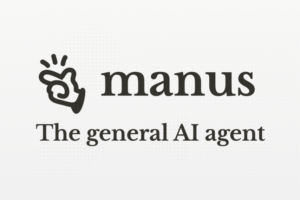Exploring DeepSeek, Reasoning Models, and the Future of Large Language Models

Understanding the Impact of Reasoning Models in AI
Introduction to Reasoning Models
In recent discussions within the AI community, one particular Chinese AI model called DeepSeek has drawn significant attention. However, beyond mere speculation about DeepSeek, it is essential to recognize the broader technological shift that reasoning models represent in the landscape of artificial intelligence (AI). These models are increasingly viewed as a potential future for large language models (LLMs), positioning them at the forefront of AI development.
The Rise of Reasoning Models
Reasoning models have been making headlines as they demonstrate superior capabilities in various tasks compared to traditional models. This growing trend is not limited to DeepSeek; several AI research labs globally are directing their resources and research efforts into developing these advanced models. The current environment indicates that reasoning models are not just a passing fad but represent a significant evolution in AI technology.
Key Features of Reasoning Models
Reasoning models stand out for their ability to provide more logical and coherent outputs. Below are some distinctive features:
- Enhanced Logical Reasoning: They excel in tasks that require logical deduction and inference, surpassing conventional models.
- Better Context Understanding: These models demonstrate improved comprehension of complex queries, leading to more relevant responses.
- Increased Accuracy: Reasoning models tend to produce outputs that are not only contextually appropriate but also factually correct.
Implications for AI Development
The implications of integrating reasoning models into AI are vast:
- Improved Interaction: With more advanced reasoning skills, user interfaces powered by these models can offer more interactive and intelligent responses.
- Application Across Industries: Industries such as healthcare, finance, and education can benefit from the sophisticated reasoning capabilities, leading to better decision-making tools.
- Advancements in Natural Language Processing (NLP): The NLP field is expected to progress rapidly, providing tools that can understand and respond human-like.
Notable Contributors and Insights
In a recently published video, a16z partners Guido Appenzeller and Marco Mascorro elaborate on how DeepSeek operates and its implications for the era of reasoning models. Their insights provide a deeper understanding of the underlying technology and the significant potential it holds for future AI applications.
Global Developments and Research Initiatives
Research efforts on reasoning models are not only limited to one region but are being pursued worldwide. Major AI labs have recognized the significance of these models and are investing heavily in their development. Many of these labs are focusing on integrating reasoning capabilities into existing AI frameworks, leading to more robust systems.
Potential Challenges Ahead
Despite the positive outlook, several challenges persist regarding reasoning models:
- Complexity of Development: Creating effective reasoning models is a complex task that requires advanced algorithms and vast amounts of training data.
- Ethical Considerations: With power comes responsibility; ensuring these models are used ethically will be critical as they become more widespread.
Conclusion
The advent of reasoning models like DeepSeek marks a transformative moment in artificial intelligence. As these models advance, they offer exciting possibilities for enhancing logical reasoning and comprehension in AI. The growing focus on their development by various AI labs worldwide indicates a promising direction for the future of artificial intelligence technology.





